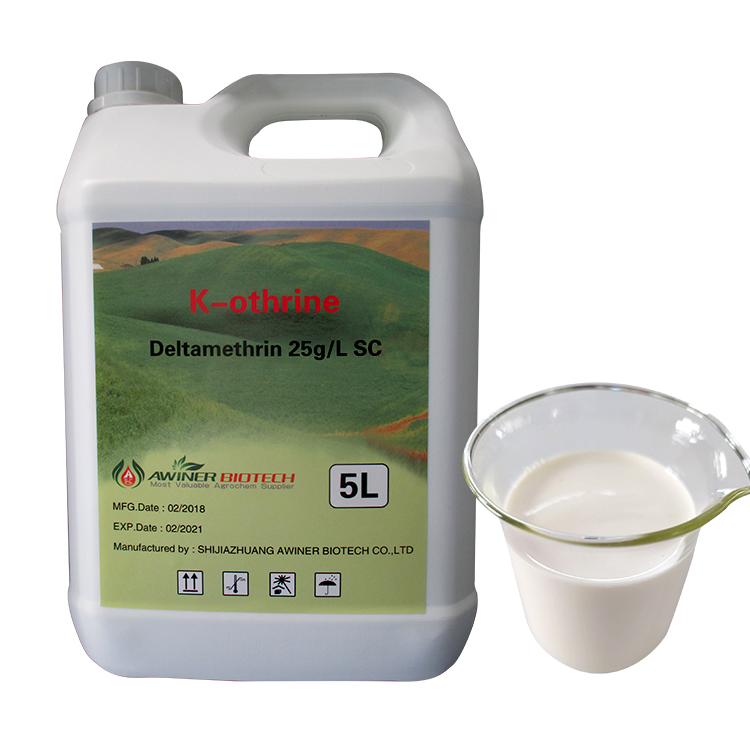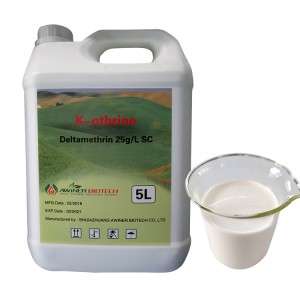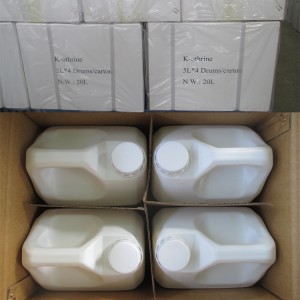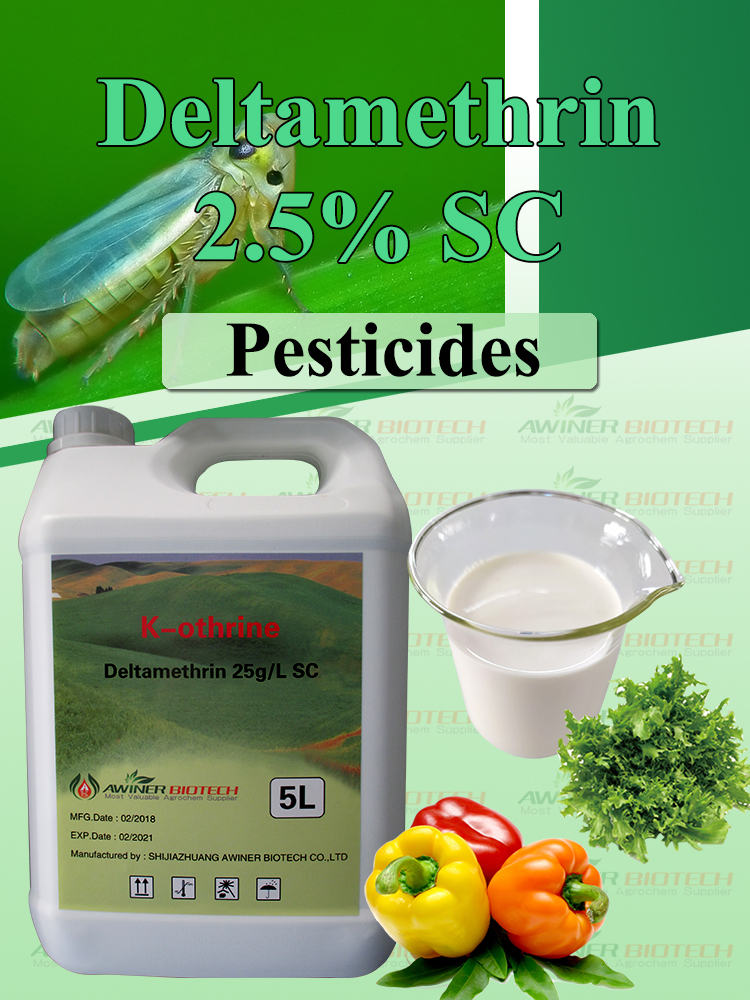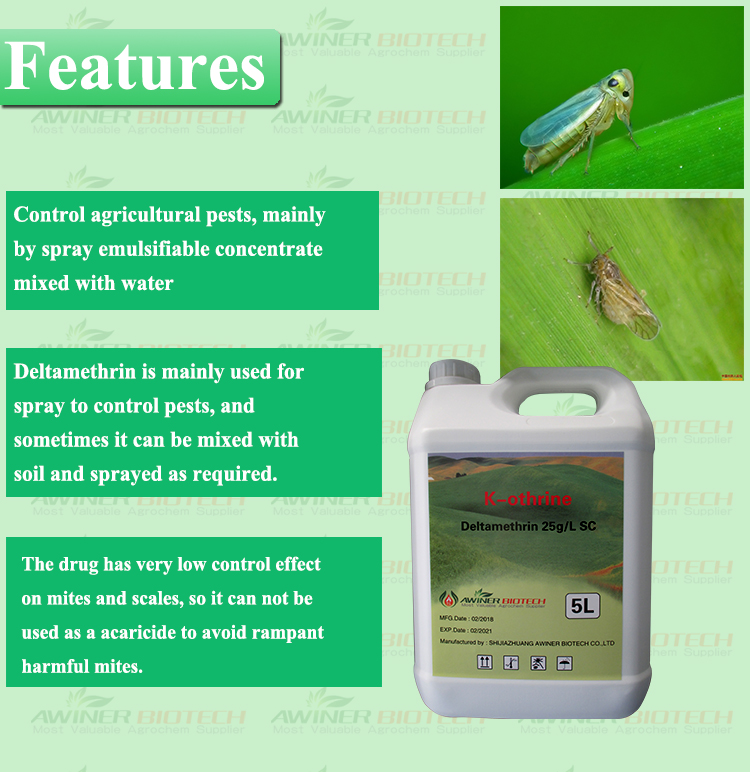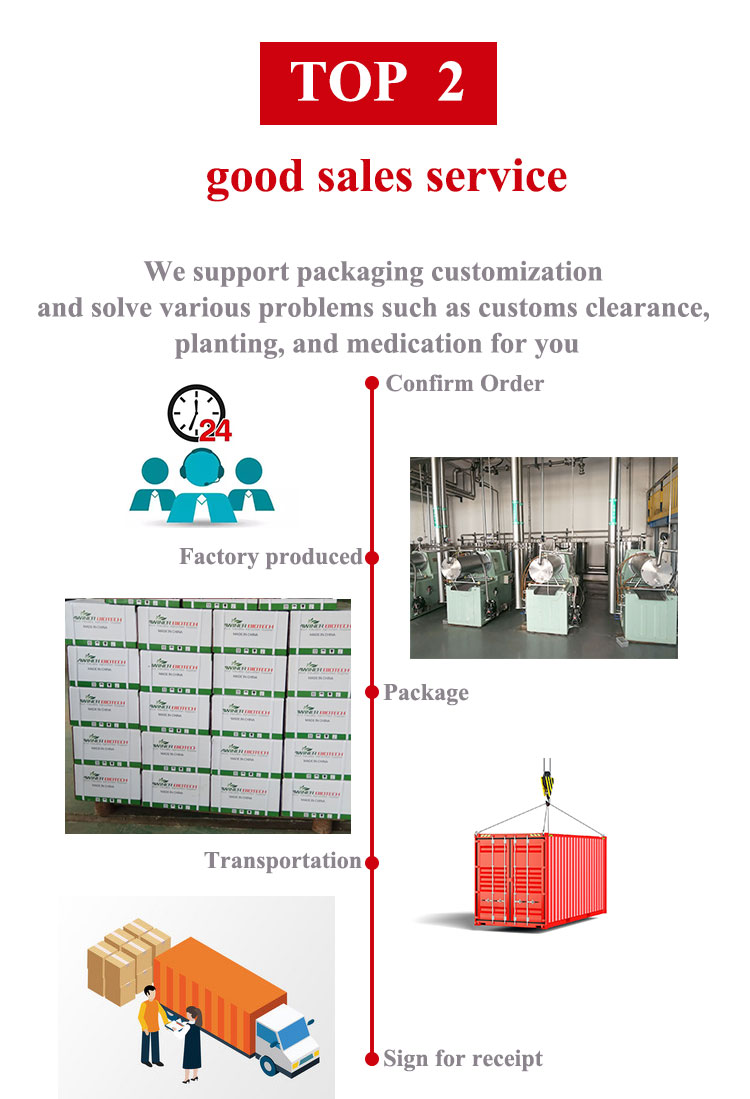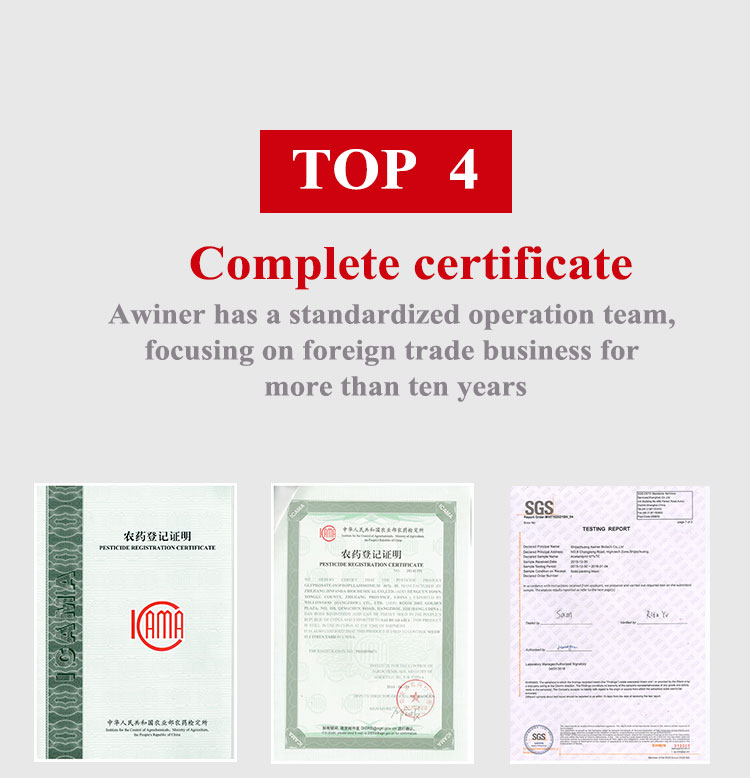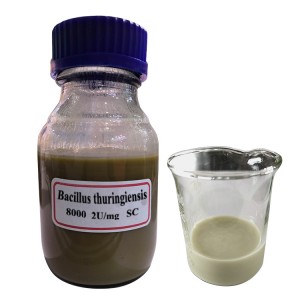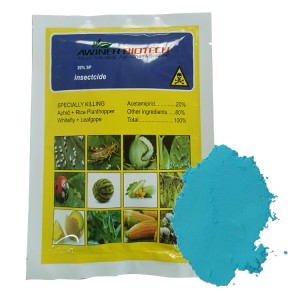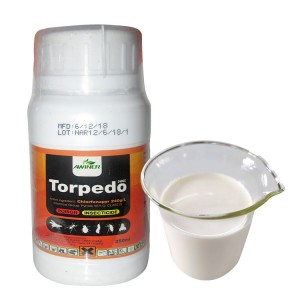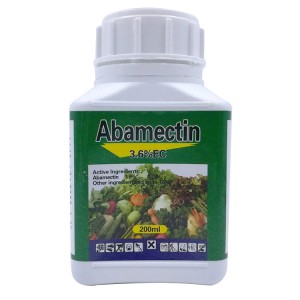Bed-bug-insecticide insecticide ingredients capsicum insecticide deltamethrin 2.5% ec
Short Description:
Deltamethrin is one of the pyrethroid insecticides with the highest toxicity to insects, with contact and stomach toxicity. It has a rapid contact killing effect, strong knockdown force, and no fumigation and inhalation effects.
| Product Name | Deltamethrin 2.5%sc | |||
| CAS No. | 52918-63-5 | |||
| Specification (COA) | Contect: ≥2.5% Water: ≤1.0% Appearance: Pale yellow |
|||
| Mode of action | Non-systemic insecticide with contact and stomach action |
|||
| Targets | Cotton bollworm, Cabbage caterpillar | |||
| Crops | Cotton, Pakchoi, Apple,Cereals, Citrus, Grapes | |||
| Main customer benefits | Longer Lasting Control Consistent Performance Secures Yield New Mode of Action |
|||
| Dosage form | SC EC | |||
Title: Deltamethrin Insecticide Applications: A Potent Tool Against a Wide Range of Pests
In today’s world, pest control has become one of the major concerns for farmers and gardeners. Pesticides play an important role in controlling the spread of pests and ensuring healthy growth of crops. Deltamethrin is a potent insecticide that has been in use for decades due to its effectiveness in controlling a wide range of pests. In this blog, we will look at the various applications of deltamethrin and its effectiveness in controlling various types of pests.
Deltamethrin is a synthetic pyrethroid insecticide that is known for its potent insecticidal activity against a wide range of insects. This insecticide is effective by contact and ingestion, making it a versatile tool for controlling pests. Deltamethrin can be used to control various types of pests, including Coleoptera, Heteroptera, and Homoptera.
Coleoptera, or beetles, are a major pest in agriculture and can cause significant damage to crops. Deltamethrin can be used to control various types of beetles, including Colorado Potato Beetle, Flea Beetle, and Japanese Beetle. Deltamethrin is effective against beetles by contact and ingestion, and it can be applied either by foliar spraying or soil application.
Heteroptera, or true bugs, are another major pest that can cause significant damage to crops. Deltamethrin can be used to control various types of true bugs, including Stink Bugs, Squash Bugs, and Lygus Bugs. Deltamethrin can be applied either by foliar spraying or soil application.
Homoptera, or sap-sucking insects, can also cause significant damage to crops. Deltamethrin can be used to control various types of sap-sucking insects, including Aphids, Whiteflies, and Leafhoppers. Deltamethrin is effective against sap-sucking insects by contact and ingestion, and it can be applied either by foliar spraying or soil application.
Deltamethrin is also effective against various types of mites, including Red Spider Mites and Two-Spotted Spider Mites. Deltamethrin can be applied either by foliar spraying or soil application.
So, how does deltamethrin work? Deltamethrin acts on the nervous system of insects by blocking the movement of sodium ions, which are necessary for the transmission of nerve impulses. This results in paralysis and death of the insects. Deltamethrin is also effective against resistant strains of insects due to its high potency.
However, it is important to note that deltamethrin, like all pesticides, should be used with caution. It is important to follow the label instructions carefully and wear appropriate protective clothing when handling and applying the insecticide. It is also important to avoid applying the insecticide near water bodies, as it can be toxic to aquatic life.
In conclusion, deltamethrin is a potent insecticide that can be used to control a wide range of pests. Its effectiveness by contact and ingestion makes it a versatile tool for pest control. However, it is important to use deltamethrin with caution and follow label instructions carefully. With proper use, deltamethrin can help farmers and gardeners control pests and ensure healthy growth of crops.
FAQ


